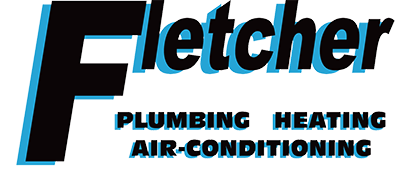We all like saving money on our monthly utility bills, but it turns out there’s a way to lower energy use, even when you’re not even home.
The key is your thermostat. By using automatic schedules, you can help the thermostat plan for your preferred temperatures. You can create a number of automated temperature settings for when you’re home, away or even when you’re asleep.
With a few simple adjustments, you can enjoy comfy temperatures while keeping more money in your pocket. Take a look at a few ways your thermostat doesn’t have to use up all your summer spending money:
While at Home
Whenever you’re at home, you want comfortable temperatures. For the most part, you probably have your thermostat lower in the summer if you’re indoors to appreciate the cool air.
But in terms of energy efficiency, the best range for when you’re in your home during the summer is actually around 78 and 80 degrees Fahrenheit. With this adjustment, you can stay cool while still lowering your monthly energy bill.
While Away
When setting the temperature for a vacation or other trip away from the house, it’s advantageous to set the thermostat higher for while they’re gone.
If your home is in a shady spot in a cooler climate, you can set the temperature as high as 88 degrees while no one is home before you adjust it back to the sweet spot of 78-80 degrees once you’re home again. This way, your air conditioning won’t have to work constantly to keep an empty house cool.
While Asleep
When it comes to sleeping in the summer, you want a temperature that’s nice and cool. A great place to start is between 68-72 degrees Fahrenheit. This will keep you from getting too hot or too cold while you’re trying to sleep.
Other Ways to Use Less Energy:
- Put in a smart thermostat: Trying a smart thermostat in the summer is an excellent way to reduce energy costs since it can plan your temperature adjustments according to your lifestyle and idea of what comfortable is. It’ll take care of making changes while you are home or sleeping, before allowing it to warm up when no one is home. Using reputed brands and models such as the Lennox iComfort, you are able to adjust settings and schedules through your smartphone, tablet or laptop. Planning smart thermostat installation in your Smyrna home is an effortless way to set the correct temperature even when you aren’t home.
- Update your existing HVAC system: A high-efficiency HVAC system saves money right from the start. With greater energy efficiency, you can also count on lower utility bills since more efficient equipment requires less energy to heat and cool your home. Air conditioning installation in Smyrna is a great way to beat the heat in the summer.
- Schedule annual AC maintenance: Whether or not you keep up with regular air conditioning maintenance in Smyrna can have a serious effect on your total monthly energy use. With regular cleaning of the coils, checking for damage and clearing air vents of dust and debris, this can help your HVAC system run more efficiently. More efficient operation reduces strain on key parts and lowers operational costs, leading to lower energy usage, which translates into lower energy bills.
- Replace your air filter regularly: A regular schedule for cleaning or replacing the HVAC system’s air filter saves money by keeping airflow as smooth and consistent as possible. When filters become clogged, your air conditioner will have to work harder, and the strain can reduce the system’s life span and lead to breakdowns.
- Confirm your attic is sufficiently insulated: Insulation is one of the key components in any energy-efficient home, keeping the hot air outside and the cool air inside during the summer. The North American Insulation Manufacturers Association (NAIMA) suggests that homeowners living in southern climates should possess at least 13-14 inches of insulation, while those in northern U.S. states should have 16-18 inches.
- Check your ventilation: Damage to the ventilation is capable of increasing your energy bills much more than 20 percent, plus it can potentially allow harmful emissions from your water heater, clothes dryer and other appliances throughout your home. Checking your ductwork for leaks and sealing them can help with both these issues.
- Seal all other leaky spots in your home: Sealing up other leaks in your home with caulk, foam sealant or weather-stripping keeps temperatures a little cooler on hot summer days. You should also check for any gaps around windows, doors and even outdoor fixtures. Taking the time to seal up any leaks now can help you save a lot over time.
